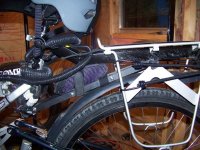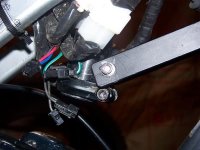sprocket
1 mW
- Joined
- May 7, 2009
- Messages
- 11
Hi,
For my second Ebike, I'd like to get something with full suspension (front & back). I'm looking for ideas on how to mount the battery/controller and some full fenders. Please post pictures or vids if you have them! I'll show my setup when i get done.
-S
For my second Ebike, I'd like to get something with full suspension (front & back). I'm looking for ideas on how to mount the battery/controller and some full fenders. Please post pictures or vids if you have them! I'll show my setup when i get done.
-S



